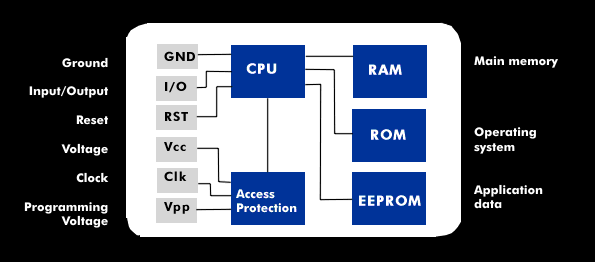chip card
Chip card is the generic term for a wide variety of plastic cards that have microchips for data storage and may be equipped with their own central processing unit( CPU). The smart cards that use a data memory for special applications are called memory cards, the smart cards with a central processing unit are smart cards or microprocessor cards.
The smart card can be considered a further development of the magnetic card; like the latter, it has a size of 85.6 x 53.58 x 0.76 mm standardized by the International Standards Organization( ISO). This standard format is known as the ID1 card. There is also the smaller, but rarely used ID00 format and the ID000 format, which is used in SIM cards. Chip cards are made of polyvinyl chloride( PVC), which can be processed well and is best suited for heavy-duty applications. Due to environmental incompatibility, smart cards are also made of polycarbonate( PC), polyethylene terephthalate( PET) and other materials.
The distinguishing features of smart cards
Smart cards are divided into memory cards, which perform only memory functions, and processor cards, which can store and process data, such as the smart card.
Smart cards work with smart card operating systems and are used as smart cards in electronic payment transactions for e-commerce, as well as for electronic access control or as immobilizers in cars. They are also used as cash cards, signature cards, electronic health cards(eGK) and electronic ID cards(ePA). Smart cards that fulfill several functions are called multifunction cards.
Information on smart cards
Smart cards can store personal information as well as secret data, encryption algorithms and digital certificates. With chip-based credit transfers, the banking software creates an electronic transfer from the user input. The banking software requires a digital signature from the chip card for approval. Access to the digital signature requires authentication of the user, generally via the personal identification number( PIN). The banking program then sends the data to the chip, which uses it to create a digital signature. Depending on requirements, however, it can also encrypt the data. The transfer data is then transmitted by the banking software to the bank, which then executes the order. The transaction takes place via a chip card terminal or smart card reader.
The specifications for using a smart card with a digital signature are defined in DIN 17.4. There are contact and contactless chip cards.


